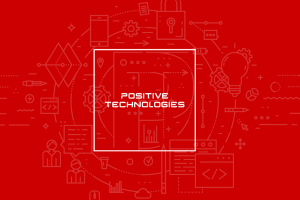Based on the findings gathered by Positive Technologies’ experts testing on mobile networks, a new report highlights the cyber security risks to networks that originate with the GTP protocol – which is used to transmit user data and control traffic on 2G, 3G, and 4G networks. Non-standalone 5G networks are also vulnerable.
Positive Technologies has published these results in its Vulnerabilities in LTE and 5G networks 2020 report, the fourth in its four-part series on the greatest threats and vulnerabilities in the mobile ecosystem.
Every tested network was vulnerable to denial of service against network equipment, which would result in legitimate internet users not being able to connect to the internet. Unlike denial of service (DoS) attacks targeted against specific users, denial of service against network equipment means loss of connection for a large number of users and could be especially dangerous for 5G networks because subscribers will also include IoT devices such as industrial equipment, smart homes, and city infrastructure.
Through the GTP protocol, networks were also vulnerable to impersonation attacks, where a criminal assumes the identity of a subscriber to get authorised access to online services and bypass two factor authentication, and fraud, where fraudsters perform mobile traffic drain for fake roamers and make the operator pay for it.
Dmitry Kurbatov, CTO at Positive Technologies comments, “Every network tested was found to be vulnerable to DoS, impersonation and fraud. In practice, this means that attackers could interfere with network equipment and leave an entire city without communications, defraud operators and customers, impersonate users to access various resources, and make operators pay for non-existent roaming services. Moreover, the risk level is high: some of these attacks can be performed using just a mobile phone.”
Knock-on effects for 5G
Faults in the GTP protocol directly impact most 5G networks because they are non-standalone, and deployed on the EPC core network, which means they have the same vulnerabilities. The GTP protocol will also partially remain in standalone 5G architecture, so even when those networks are developed security will remain a key issue.
Kurbatov continues, “The non-standalone arrangement, planned as temporary, will be the only available option for the next few years as 5G core standalone is being established. Therefore, we can say that most of today’s 5G networks, just like 4G ones, are vulnerable to these types of attacks. This makes the security vulnerabilities of the GTP protocol urgent – as the increased use of 5G vastly increases the damage an attack such as a denial of service attack could do.
“Currently, operators are putting very few security measures in place to protect against these vulnerabilities and are also making configuration mistakes that are putting their networks at further risk. We urge operators to read this research and pay more attention to the GTP protocol and follow the recommendations of the GSMA FS.20 GPRS Tunnelling Protocol (GTP) Security, including implementing ongoing monitoring and analysis of signalling traffic to detect potential security threats. With the roll-out of 5G these issues have never been more important – attempts to implement security as an afterthought at later stages may cost much more so security has to be a priority during network design.”
Download the full report here.
Comment on this article below or via Twitter: @IoTNow_OR @jcIoTnow










